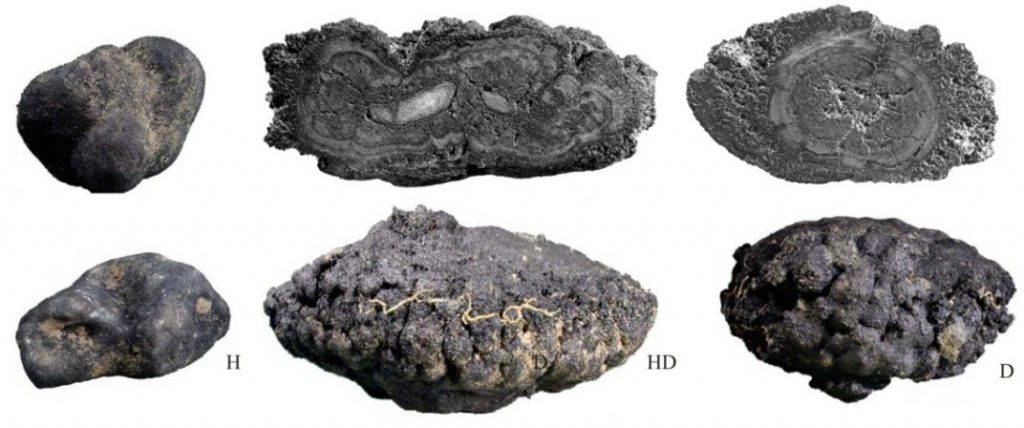Polymetallic nodules are product of autogenetic crystallization, created around a crystalline nucleus in the zones of the deep ocean floor. They are composed mainly of manganese or iron hydroxides and silicates. Economy models of the future mining are based on exploitation of metals contained in nodules, especially nickel, copper and cobalt. Nodules consist mostly of nuclei and typically concentric layers of iron and manganese hydroxides and oxides. Nucleus can be composed of volcanoclastic debris, lithified sediment, bioclasts or fragments of older nodules. The following are the main genetic nodule types: hydrogenetic (H), diagenetic (D) and hydrogenetic-diagenetic (HD). The most common color is brown to black, Mohs hardness 2 to 3. Nodules vary in size, from tiny particles to large pellets of more than 20 centimeters in diameter. Most nodules in the IOM exploration area are between 2 and 8 cm in diameter. Nodules lie down on the unconsolidated sediment-water interface, sometimes are buried in the sediment. The key manganese mineral components are todorokite, birnessite and vernadite. Major iron component is iron oxyhydroxide. Nodules, in which todorokite prevails, are usually enriched with Mn, Ni, Cu, and Zn, while those where vernadite prevails, are enriched with Fe, Co and Pb.
